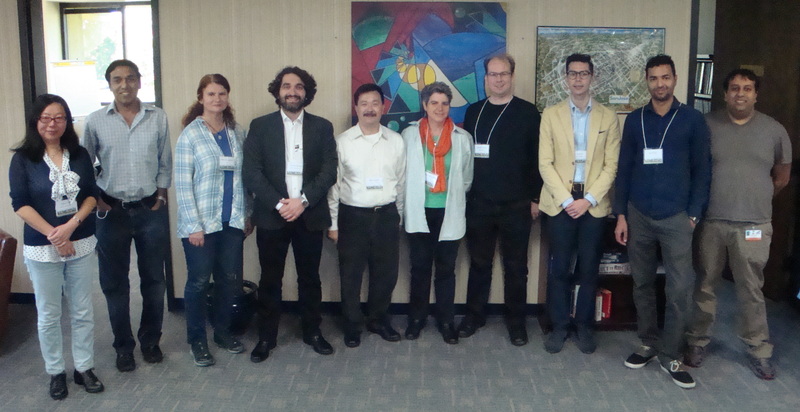Optimization strategies for transportation
October 31 to November 4, 2016
at the
American Institute of Mathematics,
San Jose, California
organized by
Chris Augenstein,
George Naylor,
and Bala Rajaratnam
Original Announcement
This workshop will examine new and different methods
for optimizing transit efficiencies and estimating new transit services in emerging or
underserved markets using applied mathematical research for the area served by the Santa Clara Valley Transportation Authority (VTA). The major goal will be to define an efficient
service based on optimizing a discreet set of constraints driven by systematic
mathematical methodologies and analysis, developing a system responsive to
meeting travel demands based on a transit route structure unfettered by past
route structures, historical service patterns or institutional constraints.
The Santa Clara Valley Transportation Authority is the operator of the bus and
light rail transit system for Santa Clara County. Service is provided using a
mix of service types, including long-haul express bus service, local bus
service, limited stop service and light rail service, addressing the
transportation needs of a variety of users. Ridership and utilization of transit
services has been characterized with stagnating patronage that has essentially
been flat for the past decade, along with a farebox recovery ratio (the percent
of the cost of operations covered by passenger fares) currently at
12 percent, one of the lowest ratios compared to peer transit agencies. These
trends stand in marked contrast to overall employment and population growth in
both Santa Clara County and the Bay Area as a whole, which has increased
significantly over the past several years, particularly in the employment
sectors. However, the challenges facing the VTA are not unique, as many regions with similar development patterns have seen reduced or stagnating demand for transit services.
The specific goals of the workshop are:
- Bringing together the various stakeholders who may have very different perspectives.
Stakeholders will include
planning practitioners with a specialization in transportation and transit,
technical experts in the fields of statistics and applied and theoretical
mathematics, technical experts and researchers in the field of transportation
planning and engineering and experts versed in federal and local level research
programs and funding.
- Developing various problem statements that will
include optimization of transit service deployment to improve efficiency under
various constraints, optimization of fare policies to maximize operating revenue
and generation of new methods to serve changing markets that evolve over time.
- Exploring the use of 'big data' sources, that is, data that is collected
from mobile devices that can be analyzed and summarized to understand
how and when persons travel.
- Creation of algorithms to mine cell phone data to determine home and work (or
school) origins/destinations, and to determine trip links or route/path
information between home-work/work-home O/D pairs.
It is anticipated that the successful workshop will result in the development of
specific problem statements that clearly define research elements that can then
be advanced through future research and development. A critical outcome will be
a framework that defines existing and potential new research programs and
identifying possible funding sources. It is anticipated that the definition of
specific problem statements can be used by the VTA to establish an agency
research program as well as develop partnerships with regional planning agencies
and local research institutions to further refine and solve problem statements.
Transferability of experiences to other urban areas with similar issues of
diminished transit demand and variable transit effectiveness will also be a key
outcome of the workshop.
Material from the workshop
A list of participants.
A report on the workshop activities.

